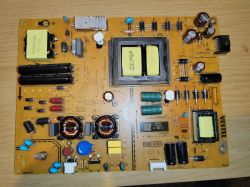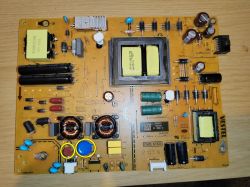Look for obvious signs of damage such as burnt components, cracks, swollen capacitors, and signs of overheating or burns on printed traces.
Capacitor Test: Use a multimeter to check the capacitors for breakdowns and for normal capacity. Remember to discharge the capacitors before measurement. When checking the capacity, unsolder the entire terminal or one leg.
Check fuses and resistors: Check that fuses are not blown, that resistors are not damaged and that their values are within specifications.
Semiconductors: Test diodes, transistors and integrated circuits using a multimeter in diode testing and resistance mode to ensure they are not shorted or open.
Voltage Measurements: If the board is safe to connect, check the output voltages. Make sure all voltages are present and meet the requirements of your TV.
Check the continuity of printed traces, especially in places where overheating may have occurred.
If any of the elements is damaged, replace it with a new one with appropriate parameters.
Capacitor Test: Use a multimeter to check the capacitors for breakdowns and for normal capacity. Remember to discharge the capacitors before measurement. When checking the capacity, unsolder the entire terminal or one leg.
Check fuses and resistors: Check that fuses are not blown, that resistors are not damaged and that their values are within specifications.
Semiconductors: Test diodes, transistors and integrated circuits using a multimeter in diode testing and resistance mode to ensure they are not shorted or open.
Voltage Measurements: If the board is safe to connect, check the output voltages. Make sure all voltages are present and meet the requirements of your TV.
Check the continuity of printed traces, especially in places where overheating may have occurred.
If any of the elements is damaged, replace it with a new one with appropriate parameters.




